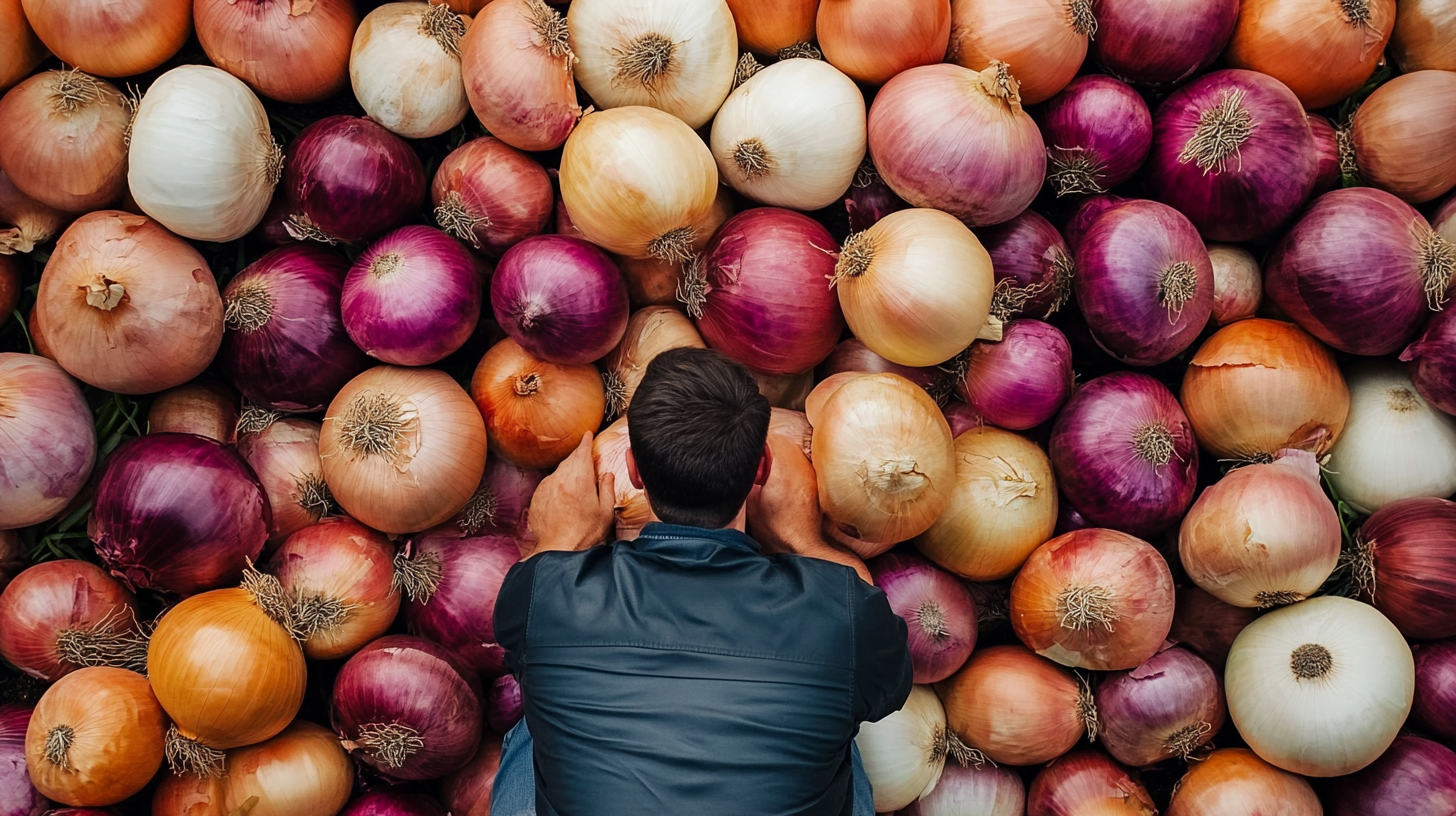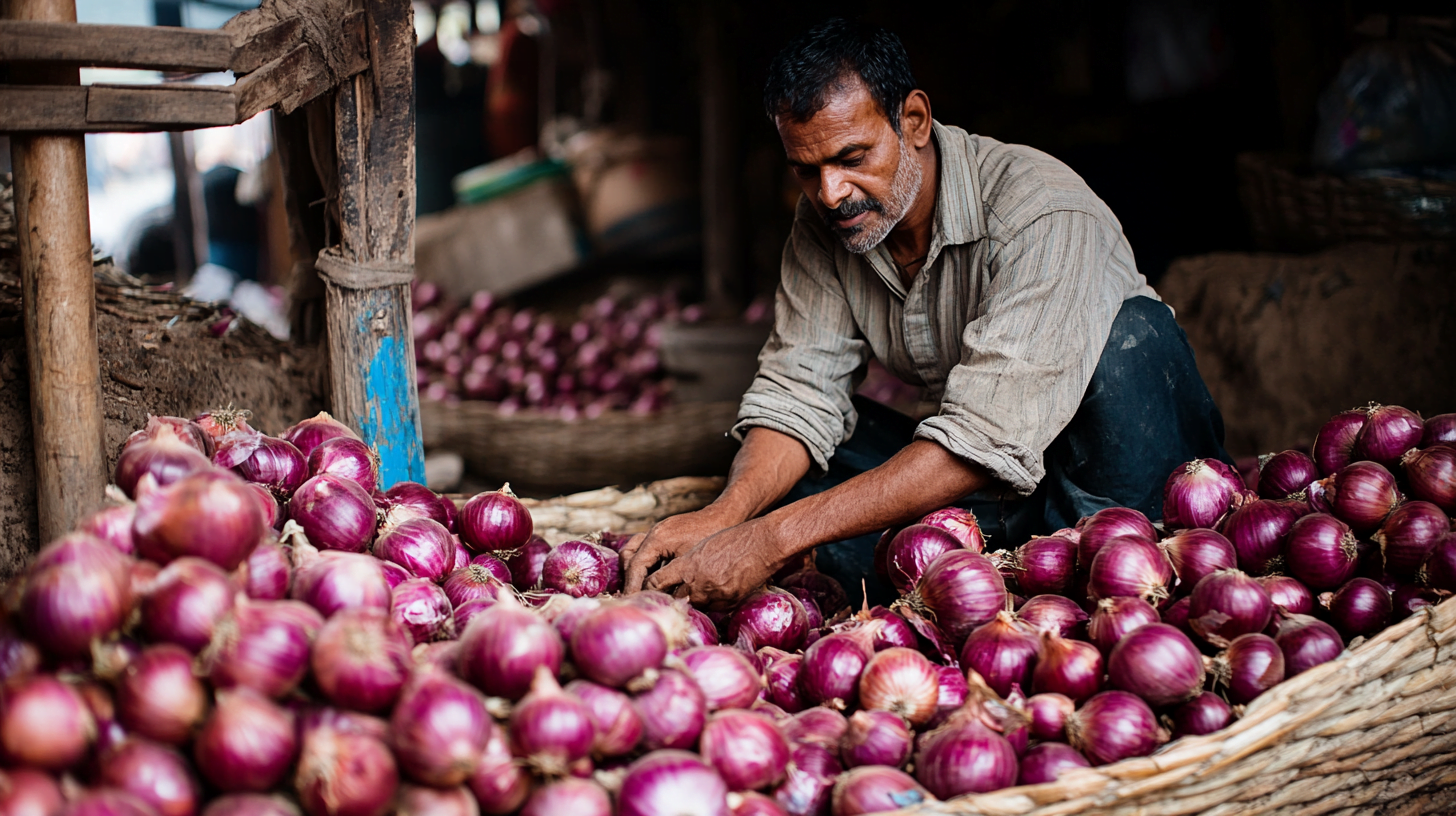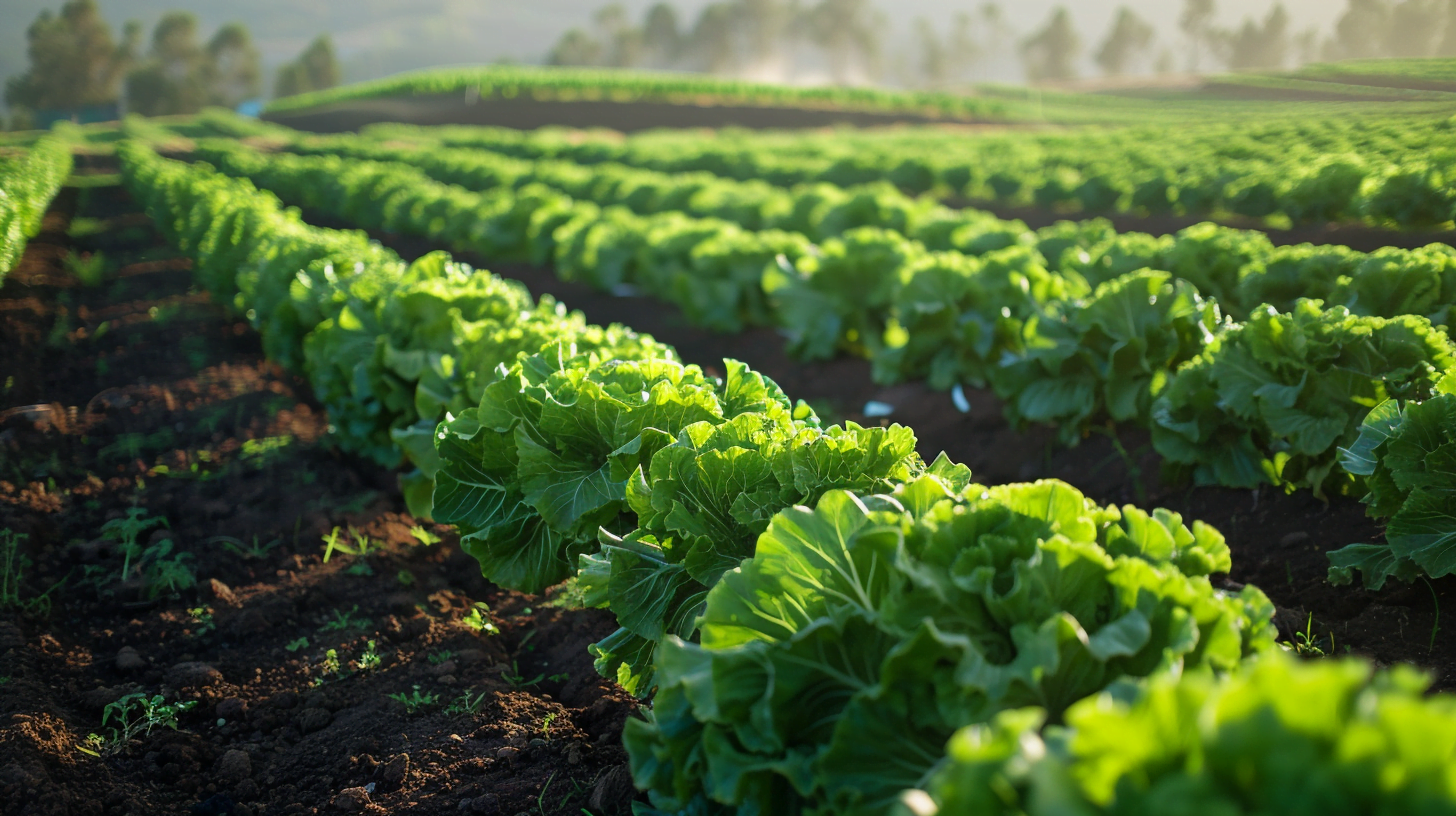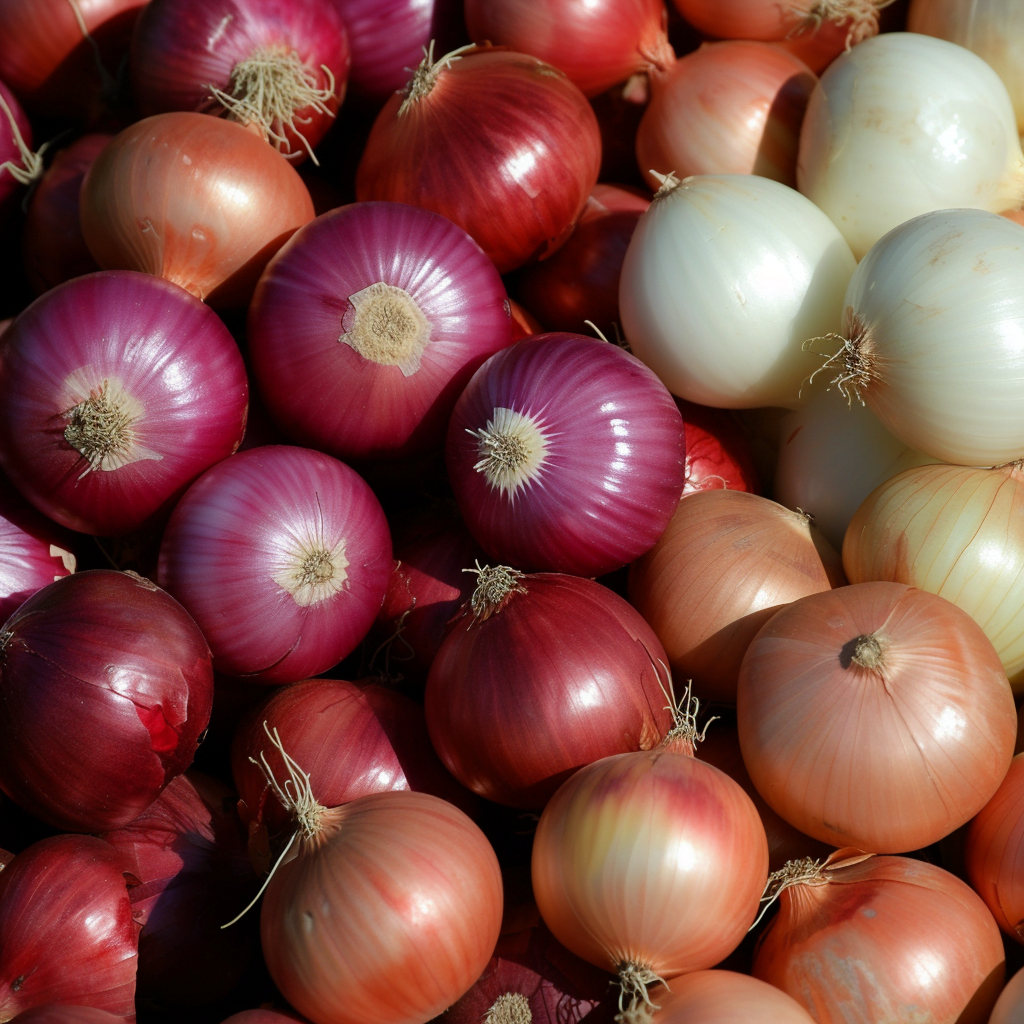Have you ever wondered which country’s kitchens are filled with the most pungent aroma of onions? You’re in for a flavorful journey as we peel back the layers on global onion consumption. Onions, those versatile bulbs that make us cry and our taste buds sing, are a staple in cuisines worldwide. But some countries take their onion love to a whole new level. Let’s dive into the world of onions and discover which nation reigns supreme in onion consumption.
The Global Onion Landscape
Before we reveal the top onion-munching country, let’s set the stage with some eye-watering facts about onion production and consumption worldwide.
Global onion production has been on a steady rise, with the world churning out a whopping 100 million tonnes annually. That’s enough onions to circle the Earth several times if laid end to end! On average, each person on the planet consumes about 13 pounds (5.9 kg) of onions per year. But as we’ll soon see, some countries blow this average out of the water.
Several factors influence onion consumption across cultures:
- Culinary traditions: Some cuisines rely heavily on onions as a base flavor.
- Climate: Onions grow well in certain regions, making them more abundant and affordable.
- Health awareness: As people learn about the health benefits of onions, consumption tends to increase.
Top Onion-Consuming Countries
Now, drum roll, please! The country that consumes the most onions per capita is… Tajikistan! Surprised? You’re not alone. This Central Asian nation tops the charts with an astounding annual consumption of 110 pounds (50 kg) per person. That’s nearly ten times the global average!
Here’s a quick look at the top onion-consuming countries:
| Rank | Country | Annual Consumption per Capita |
|---|---|---|
| 1 | Tajikistan | 110 lbs (50 kg) |
| 2 | Libya | 68 lbs (31 kg) |
| 3 | Sudan | 62 lbs (28 kg) |
| 4 | Egypt | 55 lbs (25 kg) |
| 5 | Algeria | 53 lbs (24 kg) |
These numbers might make your eyes water, but for the people in these countries, it’s just another day in the kitchen!
Onion Consumption in Major Economies
While the top spots are taken by some unexpected players, let’s not forget about the onion appetites of major economies:
China, the world’s most populous country, is also the largest producer and consumer of onions in terms of total volume. However, their per capita consumption is much lower than our top contenders.
India comes in as a close second in total onion consumption. Onions are so important in Indian cuisine that fluctuations in onion prices can even influence election outcomes!
The United States, while not in the top ranks for per capita consumption, still manages to put away about 20 pounds (9 kg) of onions per person annually. That’s a lot of onion rings and French onion soup!
Factors Driving High Onion Consumption
You might be wondering, “Why do some countries consume so many onions?” Well, it’s not just because they love to cry in the kitchen. Several factors contribute to high onion consumption:
- Cultural and culinary traditions: In many countries, onions form the base of almost every savory dish. They’re not just a flavoring, but a substantial part of the meal.
- Climate and agricultural conditions: Countries with ideal growing conditions for onions tend to incorporate them more into their diets. It’s no coincidence that many top consumers are also major producers.
- Economic factors: Onions are often an affordable vegetable option, making them a go-to choice in many households, especially in developing countries.
The Onion Economy
Onions aren’t just a tasty addition to our meals; they’re big business too. The global onion trade is a multi-billion dollar industry, with countries like India, China, and the Netherlands leading the export market.
Interestingly, onion prices can be incredibly volatile. In India, for example, onion prices have been known to increase by 500% or more in a matter of weeks due to crop failures or export bans. Such price swings can significantly impact consumption patterns, especially in countries where onions are a dietary staple.
Health Benefits of Onions
The high onion consumption in some countries might actually be doing wonders for public health. Onions are packed with nutrients and beneficial compounds:
- Rich in antioxidants: Onions contain quercetin, a powerful antioxidant that may help prevent heart disease and cancer.
- Anti-inflammatory properties: Regular onion consumption may help reduce inflammation in the body.
- Blood sugar regulation: Some studies suggest that onions can help control blood sugar levels.
- Heart health: The sulfur compounds in onions may help lower cholesterol and blood pressure.
However, it’s worth noting that excessive onion consumption can lead to digestive issues in some people. Everything in moderation, as they say!
Onion Varieties and Consumption Preferences
Not all onions are created equal, and different regions have their preferences:
- Red onions: Popular in Mediterranean and South Asian cuisines
- Yellow onions: The all-purpose favorite in the U.S. and Europe
- White onions: Often used in Mexican and Southwest American dishes
- Sweet onions: Beloved for their mild flavor, especially in raw preparations
These preferences can significantly impact consumption rates. For example, countries that prefer milder onions might use them more liberally in their cooking.
The Cultural Significance of Onions
Onions aren’t just food; they’re deeply ingrained in many cultures:
- In ancient Egypt, onions were considered a symbol of eternal life.
- In the Middle Ages, onions were so valuable they were used to pay rent and given as gifts.
- Many cultures have onion festivals, like the Vidalia Onion Festival in Georgia, USA, or the Onion Market in Bern, Switzerland.
These cultural ties often translate to higher consumption rates, as onions become more than just a vegetable – they’re a part of a country’s identity.

Conclusion
So there you have it – Tajikistan takes the crown for the country that consumes the most onions per capita. But whether you’re in Tajikistan or Texas, onions play a crucial role in cuisines worldwide. They’re more than just a tear-jerking kitchen staple; they’re an economic force, a health food, and a cultural icon.
Next time you’re chopping onions for dinner, remember: you’re participating in a global culinary tradition that spans continents and cultures. And who knows? Maybe you’ll be inspired to up your onion game and give Tajikistan a run for its money!
FAQs
- Why do some countries consume more onions than others?
Cultural traditions, local agriculture, and economic factors all play a role in determining a country’s onion consumption. - How does onion consumption affect health on a population level?
Countries with high onion consumption may see benefits like lower rates of certain cancers and heart disease, though more research is needed to confirm these effects. - Are there any countries where onions are rarely consumed?
While onions are consumed worldwide, some Arctic regions with limited agriculture have traditionally low onion consumption. - How has onion consumption changed over the past few decades?
Global onion consumption has generally increased, partly due to population growth and partly due to changing dietary habits and increased awareness of onions’ health benefits. - What’s the difference between onion production and consumption data?
Production data shows how many onions a country grows, while consumption data reflects how many are eaten. These can differ due to imports, exports, and waste.



